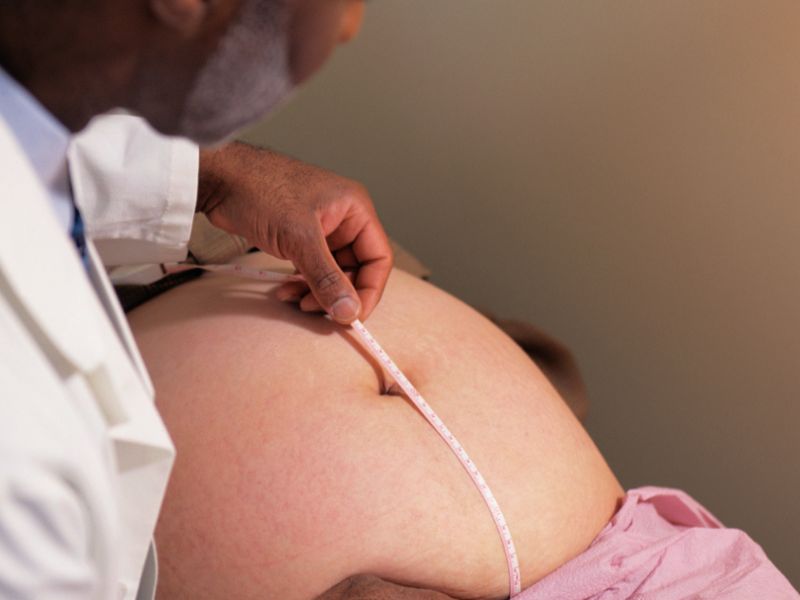By Steven Reinberg
HealthDay Reporter

THURSDAY, Jan. 17, 2019 (HealthDay News) -- More American infants are being born with their intestines outside of their bodies, and the disturbing trend might be linked to the opioid crisis, health officials reported Thursday.
The condition, called gastroschisis, is caused by a hole beside the belly button. The hole can be small or large, and sometimes other organs such as the stomach and liver can also be outside of the baby's body, according to the U.S. Centers for Disease Control and Prevention scientists.
"The cases of gastroschisis continue to increase, and we did see higher rates of cases in counties that had higher rates of opioid prescriptions," said lead researcher Jennita Reefhuis. She is chief of the Birth Defects Branch at CDC's National Center on Birth Defects and Developmental Disabilities.
The researchers found that counties that had higher rates of opioid prescribing had nearly two times more babies born with gastroschisis, compared with counties with low opioid prescribing rates.
"However, we do not know if these two things are directly related," Reefhuis stressed. "We plan to use this information to guide future research into the effects of opioids used during pregnancy."
Babies born with gastroschisis need an operation to correct the condition. They also may need other treatments, including nutrients given through an IV, antibiotics to prevent infection and careful monitoring of their body temperature.
Each year, about 1,800 babies in the United States are born with gastroschisis, according to the CDC.
Some studies have found that having a baby at a young age is a powerful risk factor for gastroschisis. But different factors, such as prescription opioid use, might also be linked, the researchers said.
However, the CDC team can't say that opioid use actually causes gastroschisis, Reefhuis said.
For the study, the researchers looked at cases of gastroschisis in 20 states, from 2006 to 2015, and saw an increase in most age groups.
When they linked opioid prescription data with gastroschisis cases, they found a higher prevalence of gastroschisis where opioid prescription rates were high.
The researchers cautioned that this finding doesn't mean that women who use opioids during pregnancy will have a baby with gastroschisis.
The finding, however, is an alert that more research on opioid use during pregnancy and its effect on infants is needed.
Peggy Honein is director of the division of congenital and developmental disorders at the CDC's National Center on Birth Defects and Developmental Disabilities. She said, "The opioid crisis is really the public health emergency of our time."
The crisis has had a devastating effect in terms of overdose deaths, but it also has a "critical impact on moms and babies," Honein said. "We want to understand the full impact that prenatal opioid exposure has on maternal health, as well as the health of newborns and children."
Honein and her colleagues published a report in January in Pediatrics that goes over what is known and not known about "the full impact of the current U.S. opioid crisis on mothers and babies."
A mother's opioid addiction can cause her baby to suffer through drug withdrawal, but many other potentially harmful effects, like gastroschisis, aren't known. These effects could also be developmental and behavioral, Honein said.
Reefhuis said that some women need to take opioids during pregnancy, including for treatment of opioid abuse disorder.
"Women who are pregnant or who are planning to become pregnant, and who are either taking opioids or are planning to take opioids, should talk to their doctor to discuss the risks and benefits to both the mother and the baby," Reefhuis said.
The report was published Jan. 18 in the CDC's Morbidity and Mortality Weekly Report.
More information
For more on gastroschisis, visit the U.S. Centers for Disease Control and Prevention.
Back

The news stories provided in Health News and our Health-E News Newsletter are a service of the nationally syndicated HealthDay® news and information company. Stories refer to national trends and breaking health news, and are not necessarily indicative of or always supported by our facility and providers. This information is provided for informational and educational purposes only, and is not intended to be a substitute for medical advice, diagnosis, or treatment.






